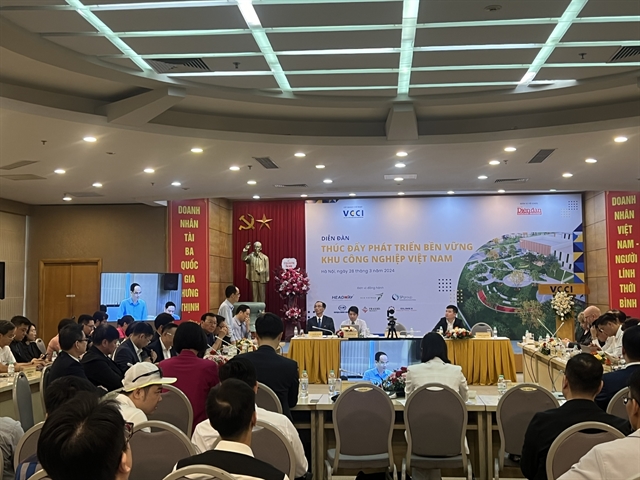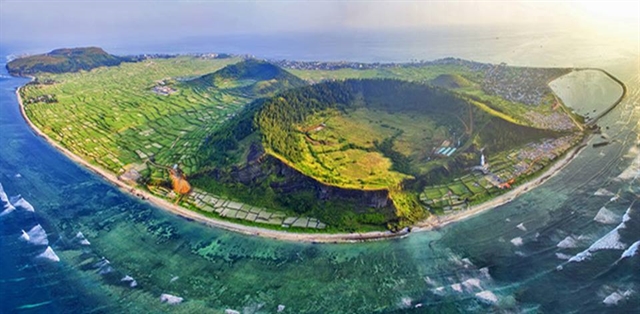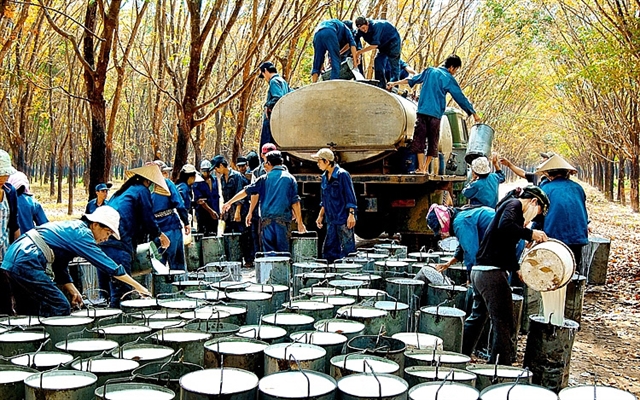 Economy
Economy


|
| A forum on promoting the sustainable development of Việt Nam's industrial parks is held on March 28 in Hà Nội. — VNS Photo Hoàng Hà |
HÀ NỘI — The sustainable development of industrial parks still faces many difficulties that need to be resolved, such as capital and finance issues, and clarifying legal regulations.
Participants at a forum promoting sustainable development of Việt Nam's industrial parks, held on March 28 in Hà Nội, pointed out those issues.
Speaking at this forum, Trần Thị Tố Loan, deputy general director of Sao Đỏ Investment Group, said the sustainable development of industrial parks (IPs) brings many significant benefits, not only economic, but also environmental and social.
However, according to Loan, this development process still has many financial difficulties and many unclear regulations, hindering the IPs in transforming the traditional model to the ecological model.
Decree 35/2022 has introduced the ecological industrial park model, but it has not given specific content on cleaner production practices, she said.
Moreover, to use cleaner resources more effectively, the IPs and businesses in the IPs need huge financial resources to change the entire technology and chain. Without specific regulations, it is difficult to encourage businesses to make that transition, Loan said.
Besides, effective use of resources requires their re-use. But IPs have had difficulty attracting recycling projects due to legal regulations on recycling, she said.
Trần Thiên Long, standing vice chairman of the Vietnam Industrial Real Estate Association, agreed there are still many barriers to promoting sustainable industrial park development in Việt Nam.
According to Long, the first problem is environmental pollution, especially wastewater and exhaust in industrial parks. Enterprises must invest in treatment technology and promote the use of renewable energy in industrial parks and economic zones.
Another problem is lack of infrastructure. The solution here is promoting development of transport and technical infrastructure, along with building policies encouraging investment activities in industrial parks in regions with well-developed infrastructure.
Some IPs have also faced lack of quality labour and the solution is to invest in training and finding high quality human resources, Long said.
There are also challenges in management, because effective industrial park management requires close cooperation between State agencies, businesses and local authorities.
Long said it is necessary to strengthen mechanisms on management and supervision for operation of all parties.
Associate Professor, PhD. Nguyễn Quang Tuyến from Hà Nội Law University said that current institutions and policies on developing industrial parks and economic zones have not ensured stability and synchronisation, and have not made breakthroughs on their contributions to socioeconomic development.
The quality and efficiency of industrial park and economic zone development planning have not met the demand. In particular, land management and use is considered a major obstacle to the development of industrial parks and economic zones in Việt Nam, Tuyến said.
He proposed that completing the legal framework and resolving problems in investment and development of industrial parks and economic zones is important to their stability in the future.
In addition, it is necessary to raise awareness of State agencies at all levels about the sustainable development of industrial parks and economic zones. Management boards of industrial parks and economic zones are permitted to solve some administrative procedures.
According to Tuyến, the efficiency of state management of industrial parks and economic zones needs to improve.
Speaking at the forum, Nguyễn Quang Vinh, vice chairman of the Vietnam Chamber of Commerce and Industry (VCCI), said that Việt Nam has 418 industrial parks, including 371 IPs located outside economic zones, 39 IPs in coastal economic zones, and 8 IPs in border gate economic zones. About 298 industrial parks have been put into operation. Businesses in industrial parks contribute about 50 per cent of the country's total export turnover.
Therefore, the development of industrial parks plays an important role in the socio-economic picture of Việt Nam, he said.
The sustainable development of industrial parks will significantly contribute to realising the net zero emissions target (NetZero) by 2050, the National Green Growth Strategy for the 2021-2030 period, vision 2050 and many other important policies of Việt Nam. — VNS









